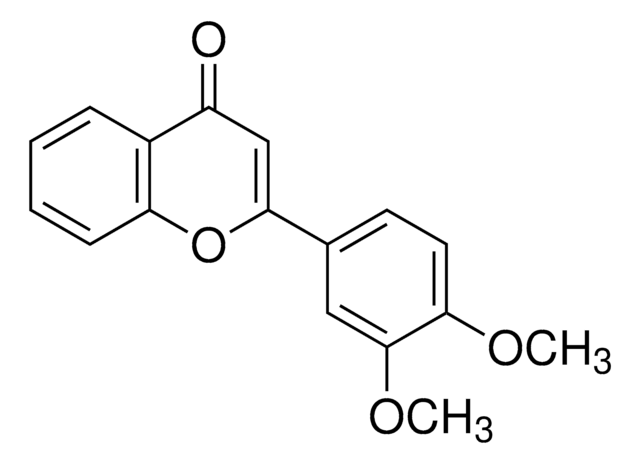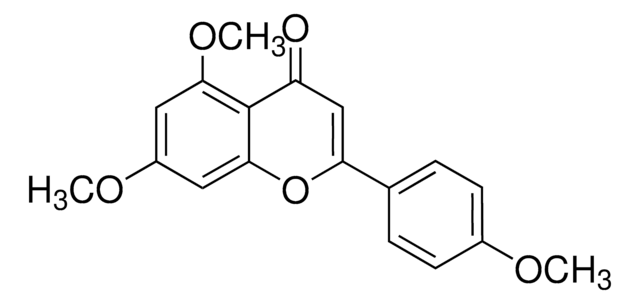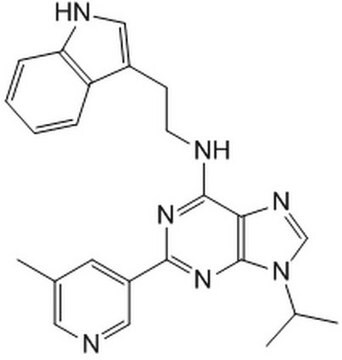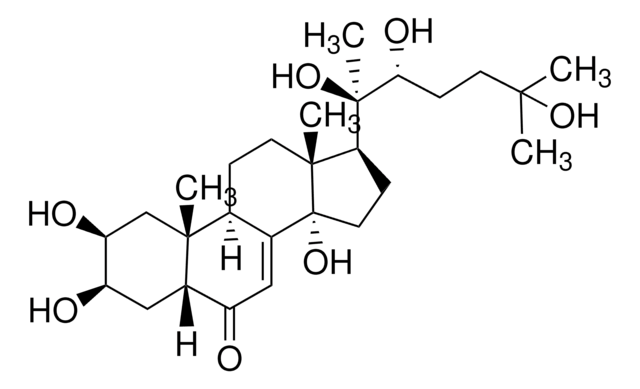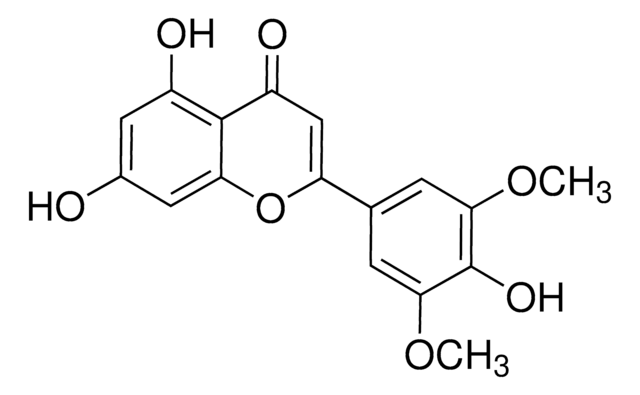Kluczowe dokumenty
T4080
6, 2′, 4′-trimethoxyflavone
≥98% (HPLC)
Synonim(y):
2-(2,4-Dimethoxyphenyl)-2,3-dihydro-6-methoxy-4H-1-benzopyran-4-one, TMF, Trimethoxyflavone
About This Item
Polecane produkty
Poziom jakości
Próba
≥98% (HPLC)
Formularz
powder
warunki przechowywania
desiccated
protect from light
kolor
yellow
rozpuszczalność
DMSO: >5 mg/mL
temp. przechowywania
room temp
ciąg SMILES
COc1ccc(c(OC)c1)C2=CC(=O)c3cc(OC)ccc3O2
InChI
1S/C18H16O5/c1-20-11-5-7-16-14(8-11)15(19)10-18(23-16)13-6-4-12(21-2)9-17(13)22-3/h4-10H,1-3H3
Klucz InChI
WUWFDVDASNSUKP-UHFFFAOYSA-N
Działania biochem./fizjol.
Uwaga dotycząca przygotowania
Hasło ostrzegawcze
Danger
Zwroty wskazujące rodzaj zagrożenia
Zwroty wskazujące środki ostrożności
Klasyfikacja zagrożeń
Acute Tox. 3 Oral
Kod klasy składowania
6.1C - Combustible acute toxic Cat.3 / toxic compounds or compounds which causing chronic effects
Klasa zagrożenia wodnego (WGK)
WGK 3
Temperatura zapłonu (°F)
Not applicable
Temperatura zapłonu (°C)
Not applicable
Wybierz jedną z najnowszych wersji:
Certyfikaty analizy (CoA)
Nie widzisz odpowiedniej wersji?
Jeśli potrzebujesz konkretnej wersji, możesz wyszukać konkretny certyfikat według numeru partii lub serii.
Masz już ten produkt?
Dokumenty związane z niedawno zakupionymi produktami zostały zamieszczone w Bibliotece dokumentów.
Nasz zespół naukowców ma doświadczenie we wszystkich obszarach badań, w tym w naukach przyrodniczych, materiałoznawstwie, syntezie chemicznej, chromatografii, analityce i wielu innych dziedzinach.
Skontaktuj się z zespołem ds. pomocy technicznej